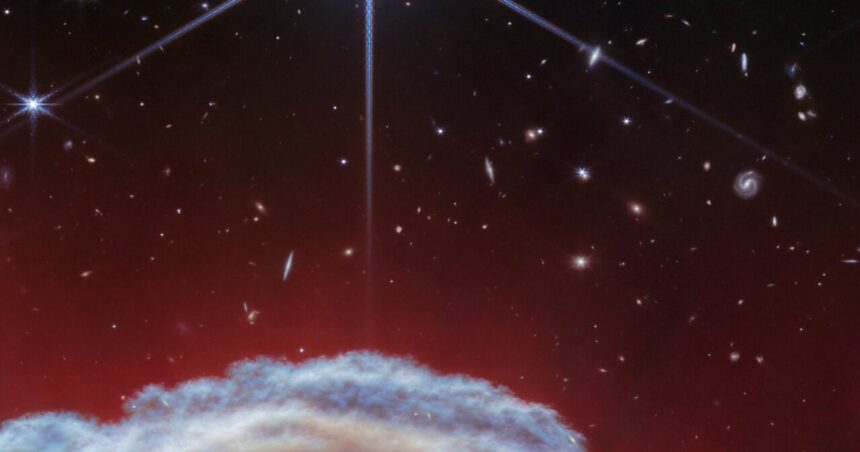A new image from the James Webb Space Telescope shows the sharpest infrared view to date of a portion of the famous Horsehead Nebula, an iconic cloud of dust and gas that’s also known as Barnard 33 and is located around 1,300 light-years away.
The Horsehead Nebula is part of a large cloud of molecular gas called Orion B, which is a busy star-forming region where many young stars are being born. This nebula formed from a collapsing cloud of material that is illuminated by a bright, hot star located nearby. The image shows the very top part of the nebula, catching the section that forms the “horse’s mane.”

This image was taken using Webb’s NIRCam instrument, which looks in the near-infrared wavelength (just beyond the range of what is visible to the human eye). It shows many background galaxies and bright stars, as well as the cloud of material at the bottom.
Another view of the same region was taken using Webb’s MIRI instrument, which operates in the mid-infrared and highlights more structures within the nebula, but fewer background objects. By combining views from both instruments, scientists can build up a more complete picture of the region.

To compare the different views seen by the two instruments, there is a slider tool on the Webb website that lets you flick between each image.
Researchers are particularly interested in the Horsehead Nebula because it is a pocket of neutral material in the midst of lots of sources of ultraviolet light. The gases in this area, called a photodissociation region, or PDR, are warmed by radiation, but mostly not ionized, unlike the large amounts of gas around bright young stars that quickly become ionized due to the radiation given off by the stars. PDRs are thought to form in areas where gas is present at just the right density to allow ultraviolet radiation to penetrate and warm the gas, but not to ionize it.
PDRs are typically found at the boundaries of large clouds of molecular gas, and while astronomers used to think that these regions were homogeneous, they now know that they can have complex structures of their own — some of which can be seen in these images. The researchers working with Webb will next use its spectroscopy instruments to learn more about the material that makes up the nebula.
Editors’ Recommendations

